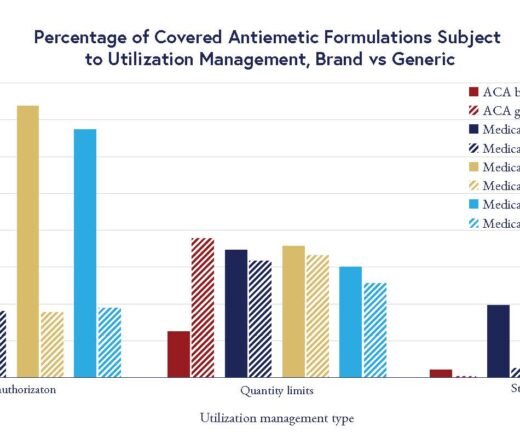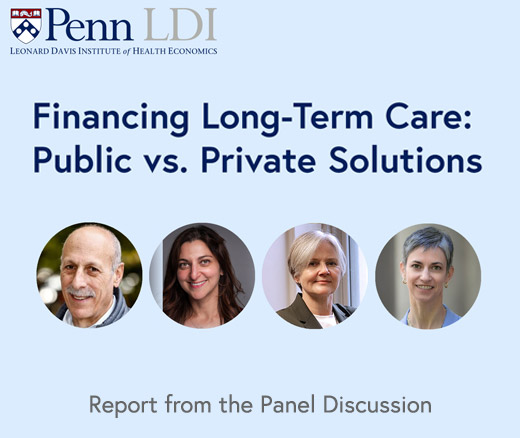
Applying for SNAP Just Got Harder—But New Evidence Shows Making It Easier May Cut Hunger
Administrative Hurdles, Not Just Income Rules, Shape Who Gets Food Assistance, LDI Fellows Show—Underscoring Policy’s Power to Affect Food Insecurity
Health Care Payment and Financing
News
Current U.S. payment structures inadequately support the financial sustainability of health-system-based population health programs, according to a new study published in the July edition of the NEJM Catalyst’s Innovations in Care Delivery journal.
A ten-member research team co-led by LDI Senior Fellow Matthew J. Press, MD, MSc, and Wharton School MBA student Allison Ng, analyzed the Penn Medicine Healthy Heart (PMHH) program as a case study evaluating the financial sustainability of population health initiatives in order to guide other health systems in building financial models for similar initiatives. In their modeling, only the scenario with universal coverage of Chronic Care Management (CCM) and Remote Patient Monitoring (RPM) billing codes provided sufficient revenue to at least break-even.

“Today’s payment environment — both fee-for-service and value-based payment — must evolve to better support population health initiatives,” said Press.
The PMHH Program is a six-month, text-based initiative designed to help primary care patients at high risk for cardiovascular disease manage blood pressure and cholesterol remotely. It aims to reduce their risk of heart disease from home through ongoing coaching, medication management, and lifestyle support via text, phone, and video managed by a central team of navigators and nurse practitioners. The clinical trial began in early 2024, following two years of pilot testing. It is the flagship of Penn Medicine’s atherosclerotic cardiovascular disease (ASCVD) Risk Reduction Initiative.
The effort to broaden the availability of population health programs is aimed at better addressing the chronic diseases that account for nearly 90 percent of U.S. health care spending. Current health systems’ population health efforts in relation to these diseases have shown clinical success but struggle under the current reimbursement systems.
The findings of the new study titled “Modeling the Financial Viability of a Population Health Program: A Formidable Challenge for Health Systems” illustrate those barriers that impede scalability in today’s payment environment.
The researchers examined different scenarios under varying degrees of fee-for-service (FFS) and value-based payment (VBP) and found that the only scenarios in which the initiative achieves net profit are those with optimal (universal coverage) fee-for-service billing of chronic care management (CCM) and remote monitoring (RPM) codes. Although financial modeling results will vary based on the specific intervention and market characteristics, the findings raise concerns about the ability to sufficiently reimburse population health initiatives.
Key findings were:
The findings suggest that fee-for-service billing for population health management activities, when all payers cover these codes, is a more viable mechanism than value-based payment for sustainably funding this particular program.
Press pointed out that “Our results serve as a bit of a reality check on claims that a typical value-based payment program alone can financially sustain population health initiatives.”
The study characterized the program’s three greatest challenges as:
The authors’ recommendations were these:
The study, “Modeling the Financial Viability of a Population Health Program: A Formidable Challenge for Health Systems,” was published July 16, 2025 in NEJM Catalyst’s Innovations in Care Delivery journal. Authors include LDI Senior Fellows Shivan J. Mehta, Neel P. Chokshi, and Kevin G. M. Volpp. The work was supported by a grant from the National Center for Advancing Translational Sciences (CTSA) of the National Institutes of Health (NIH).


Administrative Hurdles, Not Just Income Rules, Shape Who Gets Food Assistance, LDI Fellows Show—Underscoring Policy’s Power to Affect Food Insecurity

Chart of the Day: LDI Researchers Report Major Coverage Differences Across ACA and Medicaid Plans, Affecting Access to Drugs That Treat Chemo-Related Nausea

A Penn LDI Virtual Panel Looks Ahead at New Possibilities

Insurers Avoid Counties With Small Populations and Poor Health but a New LDI Study Finds Limited Evidence of Anticompetitive Behavior

The Evidence Suggests a Ban on Ads May Not Be A Well-Targeted Solution

Study of Six Large Language Models Found Big Differences in Responses to Clinical Scenarios